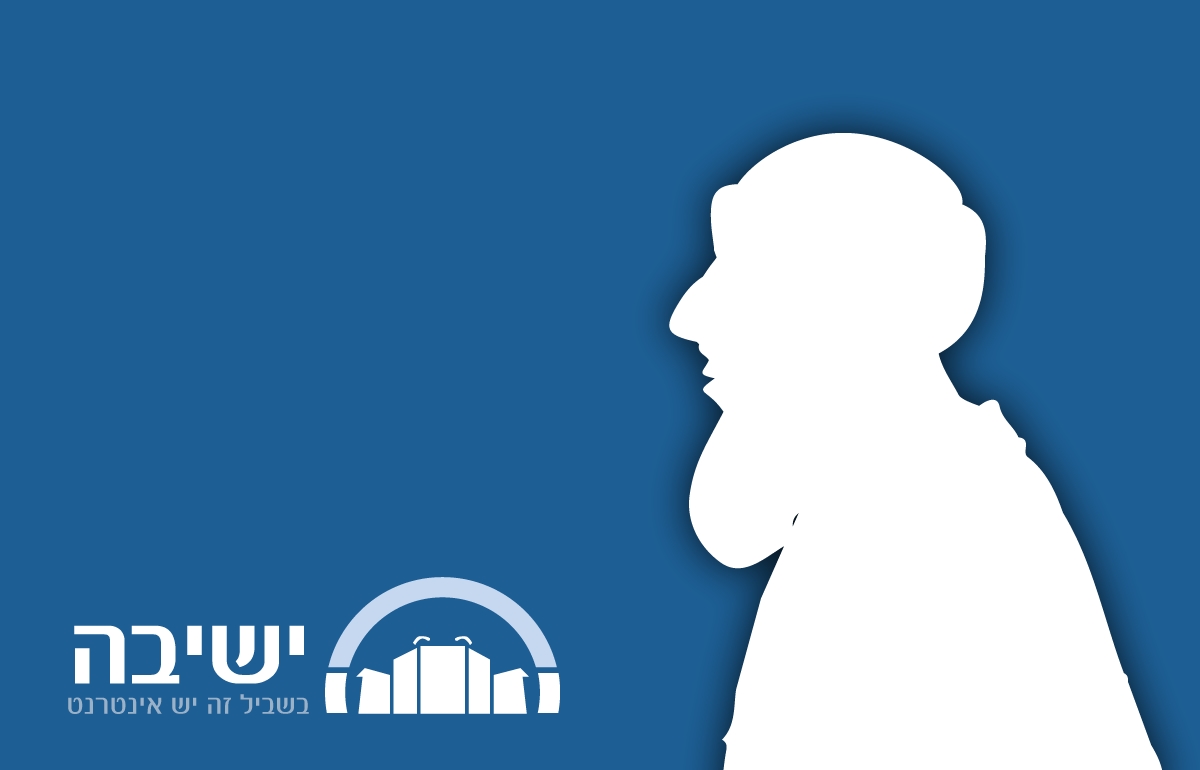- Library-Sifria
- Pesach
544
In order to understand fully the goal of the Hagada and the story of the Exodus from Egypt, we must consider the question of the wise child and the answer he receives, for he is the preferred child, and we pray that all our children develop and succeed in becoming wise.
The wise child poses a detailed question, as it is stated: "When in the future your child asks you, ‘What are these testimonies, laws, and principles that the Lord our God commanded you?’" (Devarim 6:20). The answer initially addresses the Exodus from Egypt but then broadens to include the overall purpose of the Jewish people: to come to Eretz Yisrael, to adhere to God, to fulfill all of His mitzvot, and to earn His benevolence:
Say to your child, "We were slaves to Pharaoh in Egypt, but God took us out of Egypt with a mighty hand. God brought great and terrible miracles and demonstrations upon Egypt, Pharaoh, and his entire household before our very eyes. He brought us out of there in order to bring us to, and give us, the land He promised to our forebears. God commanded us to keep all of these laws, to fear the Lord our God, for the sake of our everlasting benefit, so that He might sustains us as we are today. And it shall be considered our virtue to observe and perform all these commandments before the Lord our God, as He commanded us. (ibid. 6:21-25)
We see, then, that the aim of the Seder is to impart to our children, by telling the story of the Exodus, the desire to belong to the people of Israel, to inherit the Promised Land, to adhere to God, and to perform all of His mitzvot.
To enable us to tell the story of the Exodus to the wise child without leaving out any of its essential components, the Men of the Great Assembly, who lived at the beginning of the Second Temple period, composed the text of the Hagada. Over time, the leading Tanna’im, Amora ’im, and Ge’onim added passages containing important elements related to the mitzvot of the Hagada. Finally, about 800 years ago, a consensus version was accepted by all Jewish communities, based on the text of R. Amram Gaon.
The text of the Hagada is thus the complete story, and whoever recites it covers all aspects of the Exodus from Egypt. Nonetheless, the more one explains the Hagada and expands upon it with illuminating ideas, stories, and laws related to Pesaĥ and the Exodus, the more commendable it is. 4
7.From Indignity to Praise
The Sages state that one must begin the story of the Exodus with indignity ("genut") and end it with praise ("shevaĥ"). To what sort of "indignity" does this refer, physical or spiritual? According to one talmudic sage (Shmuel), it refers to physical indignity – the fact that we were slaves to Pharaoh in Egypt, that the Egyptians embittered our lives with all manner of hard labor, until God redeemed us from their oppression. Another sage (Rav) maintains that this refers to spiritual indignity – the fact that our distant ancestors, Teraĥ and Lavan, were pagans, and through a long process of refinement we became an entire nation of monotheists. In practice, we follow both approaches, recounting in the Hagada the process of our emergence from enslavement to freedom as well as the process that took us from idolatry to the point when God revealed Himself to us, and we achieved complete faith (Pesaĥim 116a).
At first glance, it might seem preferable to tell only the pleasant and agreeable stories. A deeper second glance, however, makes it clear that the more we contemplate the hardships of the enslavement and the ignominy of the paganism practiced by our forefathers, the better we can grasp the enormity of our redemption. Light is more discernible in the midst of darkness.
In addition, discussing our undignified beginnings allows us to better understand that Israel’s uniqueness is not contingent upon our success or good deeds, but is rooted in divine election that lies beyond all human comprehension. Though we lacked all dignity as contemptible slaves, God chose us from all other nations and took us out of Egypt with signs and demonstrations. Despite the fact that our forefathers were idolaters, God chose to reveal Himself to us and give us the Torah. Thus, Israel’s special status is not contingent on anything of this world, but on Divine fiat.
This can also teach us about Israel’s unique ability to bring redemption to the world, to turn darkness into light and evil into good. We start the story by emphasizing our former indignity, to show that from the ignorance of paganism and servitude we rose up and achieved great things. This is an encouraging and comforting message: as then, so too now – our redemption will emerge from the suffering and travails of recent generations.
Additionally, discussing the fact that we were ignoble slaves awakens our sensitivity and consideration for strangers and for the unfortunate who suffer and need help, as it is stated: "Do not oppress the stranger, for you know how it feels to be a stranger, since you were strangers in the land of Egypt" (Shemot 23:9).
8.The Meaning of the Ten Plagues
The Torah describes the ten plagues at length and in great detail, without omitting a single plague. There are many things we can learn from this. The most obvious is that there is a Judge and there is justice, and the wicked eventually will be punished. Those who are especially wicked, like the Egyptians, who enslaved an entire nation, imposed backbreaking labor, and drowned their male children in the Nile, deserved to receive their full punishment, so that all generations might learn this lesson.
There is also a profound allusion here. As we know, the world was created with ten divine utterances (Rosh Hashana 32a). Kabbala interprets these as ten sefirot, or "emanations," with which God created the world and continues to maintain and sustain it. However, until the nation of Israel emerged, these sefirot were concealed and hidden. Just as these ten spiritual elements were hidden, so too the Israelites, before they matured enough to emerge as a nation, were enslaved in Egypt.
When Israel finally reached maturity, numbering 600,000 (see above 1:4), the time had come for them to go free. It was then that God commanded Moshe to go to Pharaoh and order him to "free My people so they may make a pilgrimage to Me in the wilderness." Moshe did so, but Pharaoh refused to free them, saying, "Who is God that I should heed His call to free Israel. I do not know God and I will not free Israel" (Shemot 5:1-2). Pharaoh stubbornly refused God’s command many times. But God’s will prevails and no man can stand up to God’s word, not even the leader of the strongest empire in the world. Using the same elements He used to create the world, God rocked the Egyptian empire with plague after plague, so that the ten utterances of Creation took the form of ten plagues, until the Egyptians were completely broken, and Israel went free.
When we arrived at Mount Sinai, God revealed the meaning of those same ten utterances in the Ten Commandments, the Torah’s foundation.
9.Pesaĥ, Matza, and Maror
The Mishna teaches: "Rabban Gamliel would say: ‘Whoever does not say these three things on Pesaĥ has not fulfilled his obligation, and they are: Pesaĥ, matza, and maror'" (Pesaĥim 126a).
This means that even one who cannot recite the entire Hagada must at least delve into the three food-related mitzvot of the Seder night. The Torah thus states regarding the mitzva to teach the child who does not know how to ask: "Tell your child on that day: ‘It is because of this that God did for me when I left Egypt’" (Shemot 13:8), and the Sages teach: "‘because of this’ means when matza and maror are before you on your table" (Mekhilta Bo 17). This teaches that one must at least reflect upon the reasons for the three foods we have been commanded to eat on the Seder night. Even though we are unable to offer the Paschal sacrifice nowadays, we are nonetheless commanded to recall its meaning. 5
Because, as we have seen, the Seder is conducted in question and answer form, we recite: "The Pesaĥ [sacrifice] that our ancestors would eat when the Temple still stood, what is it for?"; "This matza that we eat, what is it for?"; and "This maror that we eat, what is it for?"
The Paschal offering expresses Israel’s special relationship with God, matza expresses freedom, and maror expresses the significance of the enslavement.
The Paschal offering expresses Israel’s special relationship with God because it recalls God’s miraculous differentiation between Israel and other nations, slaying the Egyptian firstborn while "passing over" the homes of the Israelites. One might say that Israel’s special status is not obvious to all as long as the Temple lies in ruins, and so we cannot offer the Paschal sacrifice nowadays.
The matza, though, which expresses our redemption from Egypt, is a perpetual mitzva, as we have never lost the freedom we obtained when we left Egypt and became wholly attached to God. This is true freedom, because only one who occupies himself with Torah is truly free. Even when we are enslaved among the nations, our spirit remains free, for the Torah allows us to transcend material enslavement.
Maror is a mitzva of rabbinic origin during periods when the Temple is in ruins and the Paschal sacrifice cannot be offered. Perhaps this is because maror alludes to the pain and bitterness of the enslavement, and we cannot yet fully grasp the meaning of our suffering. Only when we are able to offer the Paschal sacrifice will we grasp the full meaning of our suffering; only when we can see how it refines and purifies us and understand how our salvation sprouted from within all the difficult times does the mitzva to eat maror become de-Oraita. Until then, we have faith that everything is for the best.
Magid – Beginning the Hagada
Chapter Sixteen-Part Six
Rabbi Eliezer Melamed | 5775
Principles of Kosher Supervision on Pesah
Chapter Eight-Part Two
Rabbi Eliezer Melamed | 5775
Hozer Ve-ne'or Laws
Chapter Seven-Part Two
Rabbi Eliezer Melamed | 5775
The Mitzva to Eat Matza
Chapter Sixteen-Part Seven
Rabbi Eliezer Melamed | 5775
5. Weddings and Engagements during the Omer Period
Chapter 3: Customs of Mourning during the Omer Period
Rabbi Eliezer Melamed | Tishrei 30 5782






